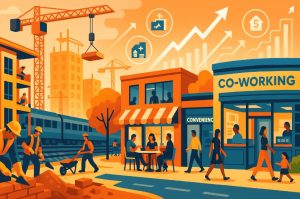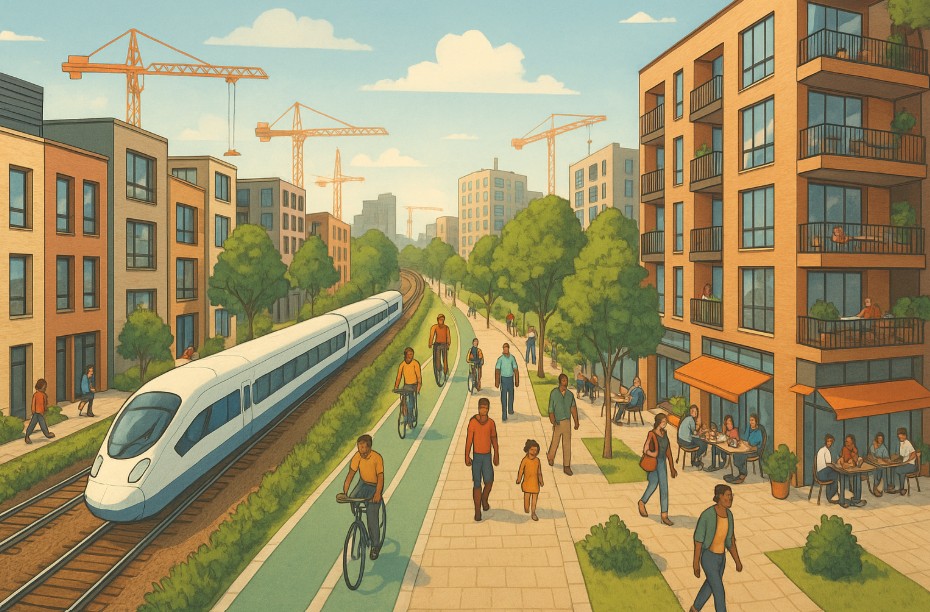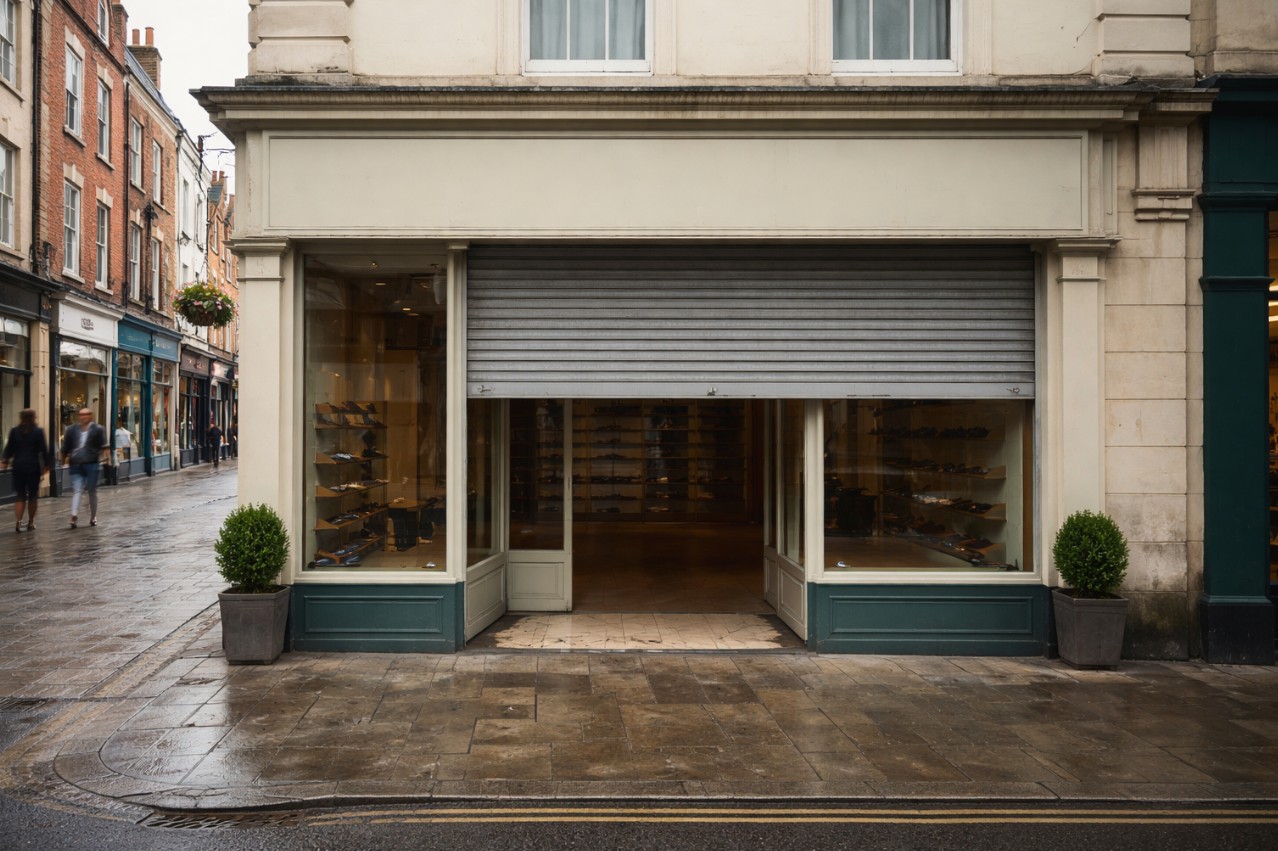Table of Contents
ToggleCan Britain’s forgotten railway land be turned into thriving communities for the next generation of homeowners and businesses? Will this strategy finally unlock housing supply and urban regeneration without encroaching on greenbelt land? The UK government believes so and its latest initiative could be a defining step in addressing the national housing crisis while driving regional economic renewal.
On 30 July 2025, the government launched Platform4, a new public property company that will spearhead the development of up to 40,000 homes on brownfield railway sites across the country over the next ten years. The first 15,000 are set to be built within five years, with the first wave targeting cities like Manchester, Newcastle, Nottingham, and Cambridge.
This development marks a critical move under the government’s Plan for Change, aiming to build 1.5 million homes while creating jobs, attracting private investment, and giving disused land a renewed purpose.
What Is Platform4 and Why Has It Been Created?

Platform4 is the government’s answer to long-standing inefficiencies in managing surplus railway land. Until now, London and Continental Railways Ltd and Network Rail’s Property Team operated independently, often duplicating efforts and missing broader opportunities for scalable development.
By merging the two into a single development company Platform4 the government aims to unlock potential across railway estates nationwide. Platform4 will consolidate strategy, accelerate regeneration, and drive collaboration between public and private sectors.
The company is expected to generate an additional £227 million in value by delivering homes and infrastructure at greater pace and scale. Crucially, profits made through the initiative will be reinvested into Britain’s railways, funding improvements in infrastructure and services.
How Will This Help First-Time Buyers and Working Families?
The primary beneficiaries of this initiative are first-time buyers and working families who have found it increasingly difficult to access affordable housing.
By prioritising the development of homes on brownfield land, the government is ensuring new homes are built where infrastructure already exists avoiding pressure on greenbelt and rural communities.
Deputy Prime Minister and Housing Secretary Angela Rayner highlighted that this is a direct response to the “generation locked out of homeownership.” With land already in public hands and often adjacent to transport links, the homes built under Platform4 promise to be well-connected, energy-efficient, and community-focused.
Over the next decade, Platform4 will deliver a blend of housing types, including affordable homes, build-to-rent options, and mixed-use developments that incorporate green spaces, shops, hotels, and local services.
Which Cities Will See Early Development and How Many Homes?
The government has already earmarked four sites for early development. These sites will serve as pilots for Platform4’s approach to regeneration.
| Location | Site Name | Homes Planned | Key Features |
| Manchester | Mayfield | 1,500 | Mixed-use neighbourhood, new green spaces |
| Newcastle | Forth Goods Yard | 600+ | Opportunity for further housing expansion |
| Cambridge | Central Rail Corridor | 425 | Sustainable design, mixed-use integration |
| Nottingham | Post-Barnum Extension | 200 (plus 348 built) | Expands on already successful brownfield build |
These four developments will act as blueprints for the national rollout, blending housing with commercial space, transport connectivity, and urban renewal.
What Kind of Economic Impact Will Platform4 Have?

Beyond housing, Platform4 is expected to stimulate over £1 billion in development activity and attract more than £350 million in private sector investment.
Transport Secretary Heidi Alexander described the initiative as a catalyst for local economies: “It’s exciting to picture the thousands of families who will live in these future homes, the vibrant neighbourhoods springing up, and the new businesses that will launch thanks to these developments.”
Each site has the potential to create construction jobs, local supply chain opportunities, retail spaces, and hospitality venues, breathing life into underused parts of cities and towns.
The initiative aligns with the vision of putting rail stations at the heart of communities, turning transit points into economic hubs. This regeneration-driven model may also inspire similar efforts on surplus land owned by other public bodies.
How Will Startups and Local Businesses Benefit?
Startups and local enterprises are set to be indirect yet significant beneficiaries of Platform4. As new homes bring in new residents, demand for local goods, services, and experiences will increase creating fertile ground for entrepreneurs to launch and expand.
New neighbourhoods around railway stations also present opportunities for:
- Flexible retail units suited for small shops and pop-ups
- Cafés, gyms, and childcare services to meet community needs
- Co-working hubs and digital infrastructure in walkable urban settings
Moreover, the integration of housing with commercial and community space promotes a live-work environment ideal for microbusinesses, freelancers, and creatives.
By planning for sustainable, multi-use development, Platform4 aims to ensure economic resilience is built into the very foundations of these communities.
Who Is Leading Platform4 and What Experience Do They Bring?

To steer this ambitious regeneration strategy, the government has appointed Bek Seeley as Chair of Platform4. Bek is a respected leader in transport-led development, having previously led Lendlease’s development business in Europe and served as Chair of the Euston Housing Delivery Group.
Her leadership will be critical in coordinating with local authorities, navigating regulatory challenges, and fostering partnerships with private developers.
The company’s CEO is expected to work closely with key industry figures and public sector stakeholders to prioritise community benefit, long-term impact, and smart infrastructure planning.
What Are Industry Leaders Saying About Platform4?
The launch of Platform4 has been widely welcomed across the housing, construction, and investment sectors. Industry experts see it as a vital step in making more public land available for regeneration, while boosting confidence among developers.
Ian Hoad, CEO of Keepmoat, said the plan “will help unlock the delivery of thousands of much-needed new homes,” pointing out that 80% of the company’s current developments are already on brownfield land.
Helen Gordon, CEO of Grainger plc, praised the focus on well-connected sites and sustainable communities, saying it offers an ideal environment for delivering high-quality rental housing.
The Home Builders Federation and British Property Federation also expressed strong support, noting the initiative’s potential to accelerate housing delivery, create jobs, and revitalise neighbourhoods across the country.
Final Thoughts
Platform4 represents more than just another housing scheme it reflects a strategic shift in how the UK uses public land.
By breathing new life into disused railway assets, the government is not only tackling the housing crisis but also seeding the growth of future communities, business ecosystems, and urban innovation.
For first-time buyers, local governments, and startups, this initiative offers a rare win-win: affordable housing, economic uplift, and purposeful regeneration that could reshape the urban landscape over the next decade.
Resource: Gov.UK
FAQ
What is Platform4?
Platform4 is a new government-owned property company that will develop surplus railway land into housing and mixed-use communities across the UK.
How many homes will be built under this initiative?
Up to 40,000 homes are planned over the next 10 years, with 15,000 expected within the first five years.
Where will the first developments take place?
Initial sites include Manchester, Newcastle, Cambridge, and Nottingham, delivering over 2,700 new homes.
Who benefits from this scheme?
First-time buyers, working families, local businesses, and the broader economy will benefit through new homes, jobs, and investment.
How is this different from previous rail land development?
Unlike the fragmented approach of the past, Platform4 merges two agencies into a single structure to increase speed, efficiency, and impact.
Will the profits be reinvested?
Yes, profits generated will be reinvested into Britain’s rail network to support better services and infrastructure.




